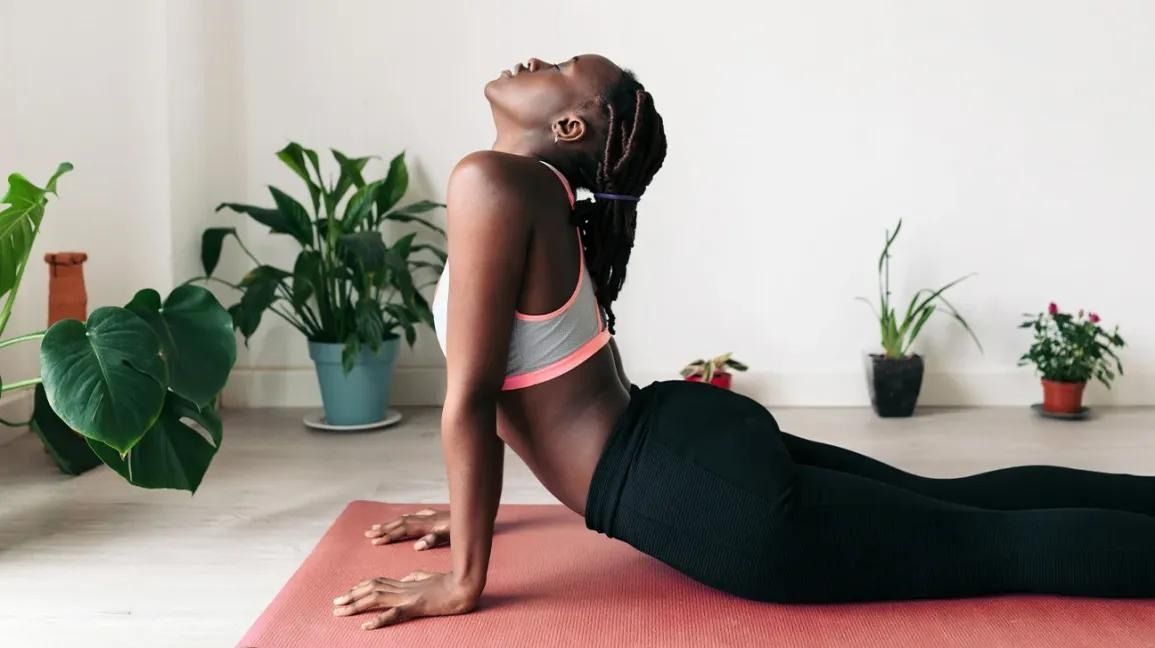

Are you feeling stressed and tense? Discover the transformative power of a daily yoga routine to reduce stress and improve flexibility. Let’s learn more about this topic below with Pacman as we explore how incorporating yoga into your daily life can lead to profound changes in both body and mind.
Establishing a daily yoga routine can have numerous benefits for your physical and mental well-being. Regular practice can help reduce stress, increase flexibility, improve posture, and enhance overall body awareness. Just as Pacman navigates through mazes with precision, yoga allows you to navigate through the challenges of daily life with greater ease and clarity. By dedicating time each day to your practice, you’ll begin to notice improvements in your strength, balance, and focus.
One of the key advantages of a daily yoga routine is its ability to reduce stress. Through a combination of breathwork, meditation, and physical postures, yoga helps activate the parasympathetic nervous system, which is responsible for the body’s rest and digest response. This activation can lead to a decrease in cortisol levels, the hormone associated with stress, and an increase in feelings of calm and relaxation. As you progress in your practice, you’ll find that you’re better equipped to handle the stressors of daily life, much like how Pacman expertly maneuvers through increasingly complex mazes.
Improved flexibility is another significant benefit of a consistent yoga practice. Many people believe that they need to be flexible to do yoga, but the truth is that yoga helps you become more flexible over time. Regular practice gently stretches and lengthens your muscles, increasing your range of motion and reducing the risk of injury in daily activities. As you become more flexible, you’ll notice that everyday tasks become easier, and you’ll feel more comfortable in your body. This increased flexibility can be likened to Pacman’s ability to navigate tight corners and narrow passages with ease.
Establishing a daily yoga routine doesn’t have to be complicated or time-consuming. The key is to start small and gradually build up your practice over time. Begin by setting aside 10-15 minutes each day for your yoga practice. Choose a time that works best for you, whether it’s first thing in the morning, during your lunch break, or in the evening before bed. Consistency is more important than duration, so focus on making your practice a regular part of your daily routine.
When creating your daily yoga routine, it’s essential to include a variety of poses that target different areas of the body. Start with some gentle warm-up exercises to prepare your body for more challenging postures. Include a mix of standing poses, seated poses, and balancing poses to work on different aspects of strength and flexibility. Don’t forget to incorporate breathwork and meditation into your practice, as these elements are crucial for stress reduction and mental clarity.
As you become more comfortable with your practice, you can gradually increase the duration and intensity of your sessions. Remember that yoga is a personal journey, and there’s no need to compare yourself to others or push yourself too hard. Listen to your body and respect its limits, just as Pacman must be mindful of the ghosts in his path. With time and patience, you’ll notice improvements in both your physical abilities and mental state.
Here’s a sample 15-minute daily yoga routine to get you started:
1. Begin with 2-3 minutes of deep breathing exercises to center yourself and calm your mind.
2. Perform 5-7 Sun Salutations to warm up your body and increase circulation.
3. Hold Warrior I and Warrior II poses for 30 seconds each side to build strength and improve balance.
4. Practice Tree Pose for 30 seconds on each leg to enhance focus and stability.
5. Move into seated forward fold for 1-2 minutes to stretch your hamstrings and lower back.
6. Finish with 2-3 minutes of Corpse Pose (Savasana) for deep relaxation and integration.
Remember, this is just a sample routine. Feel free to modify it based on your personal preferences and needs. As you become more familiar with different yoga poses, you can create your own sequences that target specific areas of focus or address particular concerns.
Mindfulness is a crucial component of any yoga practice and can significantly enhance the stress-reducing benefits of your daily routine. By bringing your attention to the present moment and focusing on your breath and body sensations, you can cultivate a greater sense of awareness and calm. This mindfulness practice can extend beyond your yoga mat and into your daily life, helping you navigate challenges with greater ease and clarity.
To incorporate mindfulness into your yoga routine, start by setting an intention for your practice. This could be something as simple as “I will focus on my breath” or “I will practice self-compassion.” Throughout your practice, continually bring your attention back to this intention and your breath. When your mind wanders, gently guide it back to the present moment without judgment. This process of returning to the present is similar to how Pacman must constantly refocus on his path through the maze, avoiding distractions and obstacles.
As you move through your yoga poses, pay close attention to the sensations in your body. Notice areas of tension or discomfort, and use your breath to release and relax these areas. Be aware of the subtle shifts and changes in your body as you hold each pose. This heightened body awareness can help you develop a deeper connection with yourself and a greater understanding of your physical and emotional needs.
To further enhance the stress-reducing benefits of your daily yoga practice, consider incorporating a short meditation session at the end of your routine. Even just 5-10 minutes of meditation can have a profound impact on your mental state and overall well-being. Start by sitting comfortably in a cross-legged position or on a chair with your feet flat on the ground. Close your eyes and focus on your breath, noticing the natural rhythm of your inhalations and exhalations.
As thoughts arise, acknowledge them without judgment and gently return your focus to your breath. You may find it helpful to use a guided meditation app or video when you’re first starting out. With regular practice, you’ll find that meditation becomes easier and more natural, allowing you to tap into a deep sense of calm and clarity whenever you need it. This ability to find stillness amidst chaos is reminiscent of Pacman’s ability to navigate through complex mazes with focus and determination.
Establishing and maintaining a daily yoga routine can be challenging, especially when life gets busy or motivation wanes. However, by approaching your practice with patience and persistence, you can overcome these obstacles and reap the long-term benefits of a consistent yoga routine. Here are some strategies to help you stay motivated and committed to your practice:
1. Set realistic goals: Start with small, achievable goals and gradually increase the duration and intensity of your practice over time. This approach helps build confidence and prevents burnout.
2. Create a designated yoga space: Set up a specific area in your home for your yoga practice. This can be as simple as a corner of a room with a yoga mat and a few props. Having a dedicated space can help you stay focused and committed to your routine.
3. Practice at the same time each day: Establishing a regular time for your yoga practice can help it become a habit. Choose a time that works best for your schedule and stick to it as much as possible.
4. Mix up your routine: To prevent boredom and keep your practice engaging, vary your yoga sequences and try new poses or styles of yoga. This variety can help maintain your interest and challenge you in new ways.
5. Use technology to your advantage: There are numerous yoga apps and online resources available that can provide guidance and inspiration for your practice. Experiment with different platforms to find what works best for you.
6. Join a yoga community: Consider taking a weekly yoga class or joining an online yoga community. This can provide support, motivation, and a sense of accountability for your practice.
7. Track your progress: Keep a journal or use a fitness tracking app to record your yoga sessions and note any improvements in flexibility, strength, or overall well-being. Seeing your progress can be a powerful motivator to continue your practice.
Remember that consistency is key when it comes to reaping the benefits of a daily yoga routine. Even on days when you don’t feel particularly motivated, try to do at least a few minutes of gentle stretching or breathwork. This commitment to showing up for yourself, even in small ways, can have a significant impact on your overall well-being.